
Japanese Bush Warbler
Japanese Bush Warbler
Japanese Bush Warbler
'Hohokekyo!' The pleasant-sounding call of the Japanese bush warbler is a herald of spring known to all. Its beautiful call is used metaphorically in phrases like 'uguisu girl' among humans. Yet, many may be unfamiliar with characteristics of this famous bird other than its song. Let's delve deeper into the life of the Japanese bush warbler, exploring the secrets behind its song and its unexpected natural predators.
Japanese Bush Warbler Basic Infomation
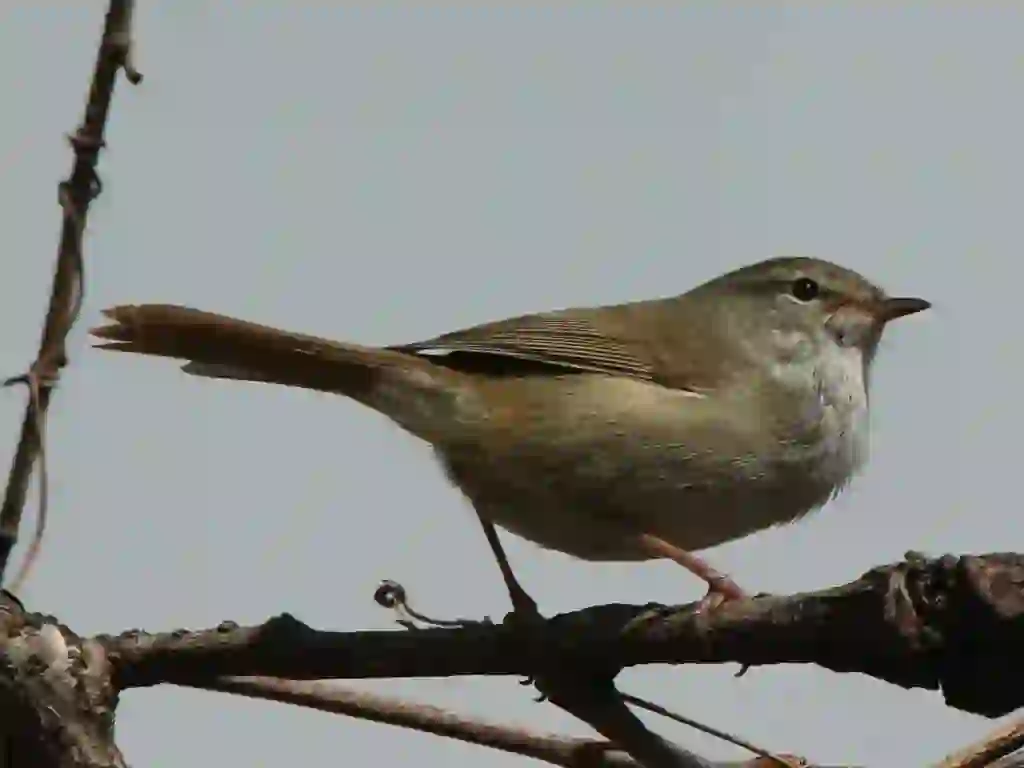
Order: Passeriformes, Family: Cettiidae, Genus: Uguisu
Male Body Length: Approximately 16 cm, Female Body Length: Approximately 13 cm
Male Wingspan: Approximately 21 cm, Female Wingspan: Approximately 17 cm
The genus Uguisu is distributed worldwide, especially prevalent in Southeast Asia. However, the common Japanese bush warbler is a species unique to Japan.
The Japanese bush warbler lives mainly in flatlands to mountainous forests and their surrounding thickets across Japan. Being a resident bird, it generally stays in the same area, although individuals in colder regions migrate to warmer places during winter.
Usually hidden within thickets, it is rarely seen, though its voice is clearly audible. Due to its cautious nature, it is difficult to spot.
In summer, they live as couples in mountainous forests, but in winter, they descend to the plains and live solitary in the thickets.
While there is a colorful confectionery named 'Uguisu mochi,' the actual bird has a brownish-green color, quite plain overall. Males and females are the same color, making it difficult to distinguish by color alone.
There is a noticeable size difference, which can be used for identification. Males are larger than females, with males being larger than sparrows and females smaller.
It has a long tail, and its beak and legs are flesh-brown, with the upper beak being slightly black.
The Japanese bush warbler is designated as a wild bird, thus cannot be kept as a pet. Care should be taken not to capture them carelessly.
Japanese Bush Warbler Q&A

When does the Japanese Bush Warbler sing?
The most distinctive feature of the Japanese bush warbler is its 'Hohokekyo' call.
Only males sing, primarily to declare their territory to other birds or to signal safety to females bringing food. 'Ho' is the intake of breath, and 'Hokekyo' is the exhale.
On the other hand, its soft call, expressed as 'Jaja', is used to intimidate intruders into its territory.
When females hear this soft call, they stop transporting food and hide for the safety of themselves and their nest, a behavior also known as 'crossing the valley.'
In human habitats, this call can be heard in early spring, but in the mountains where they nest, it is heard from early spring through summer. Early spring calls are somewhat awkward, as the birds are still practicing. By the breeding season in summer, they are ready to perform at their peak in the mountains.
Male Japanese bush warblers spend most of their day patrolling their territory, continually calling, often singing over a thousand times a day.
Interestingly, the day when a Japanese bush warbler sings for the first time in the year is known as 'the first singing day,' a sign that spring has arrived.
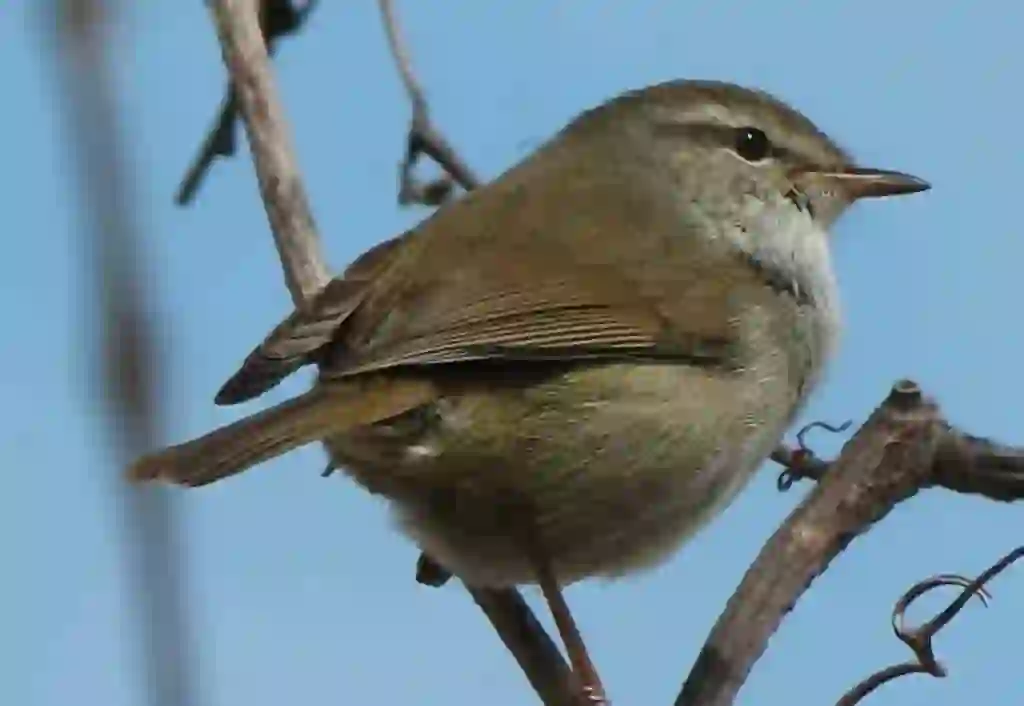
What is the origin of the Japanese Bush Warbler's name?
The origin of the name 'Uguisu' is subject to various theories, most of which derive from its distinctive call.
While nowadays it is described as 'Hohokekyo', it was once called 'Uguisu'.
Another theory suggests that the name combines 'Ugui', a version of its call, with 'su', a suffix denoting a bird, similar to other birds like crows (Karasu) or jays (Kakesu).
Apart from the call, some believe the name comes from the bird emerging from deep valleys in spring, hence 'deep emergence' morphed into 'Uguisu'.
Its other name, 'Harutsuge-bird', is derived from its habit of starting to sing in lowland areas in early spring. It has other spring-related names like 'Spring Bird' or 'Spring Herald'.
The kanji for 'Uguisu' was adopted from Chinese, but in China, it refers to a different species, the Korean bush warbler, which has a different call and appearance.
In English, it's known as 'Bush Warbler', which refers to its habit of singing from within bushes, aptly describing its natural behavior.
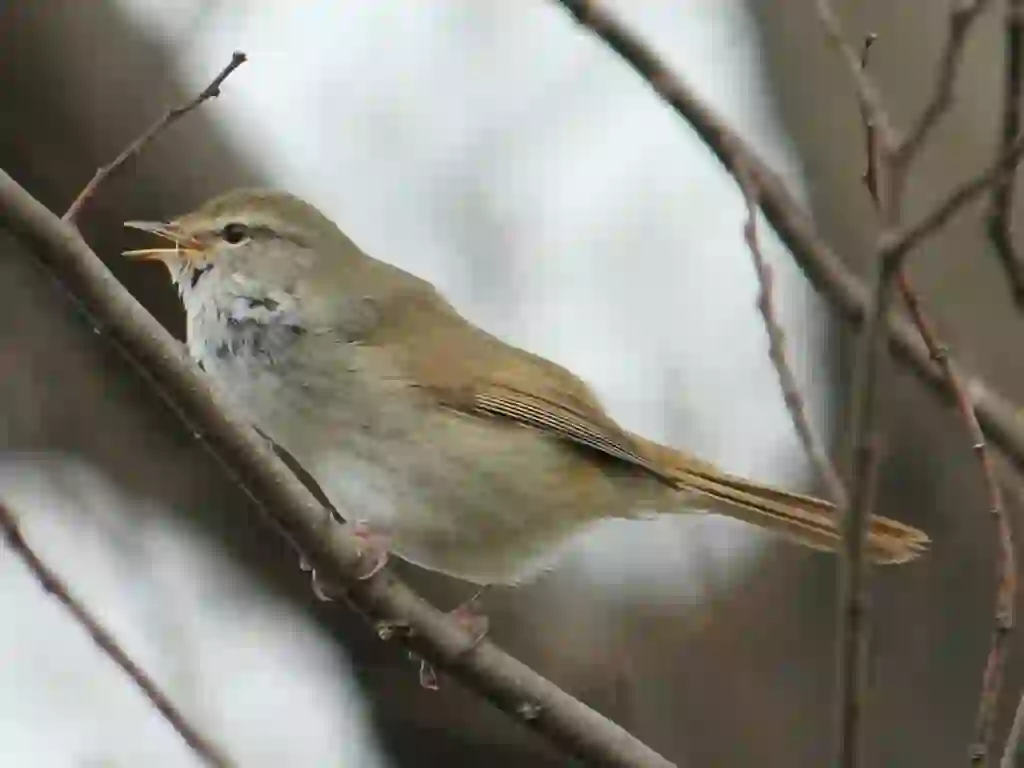
What does the Japanese Bush Warbler eat?
The Japanese bush warbler is omnivorous, varying its diet with the seasons.
In summer, it primarily feeds on small insects, larvae, and spiders, thanks to the abundance of life.
In winter, when fewer living things are available, it relies on seeds and fruits from plants as its main source of nutrition.

When is the breeding season for the Japanese Bush Warbler?
The breeding season for the Japanese bush warbler is in early summer.
They practice their singing in populated areas during early spring and start their courtship behavior and nest-building in the mountains once the breeding season begins. Nests are made from materials like dead bamboo leaves, and a typical clutch contains 4-6 eggs.
The female incubates the eggs for about half a month, and the chicks leave the nest approximately two weeks after hatching.
Japanese bush warblers practice polygyny, where one male may have several female partners who build nests. This strategy increases their chances of leaving more descendants, as eggs and chicks are highly susceptible to predation.
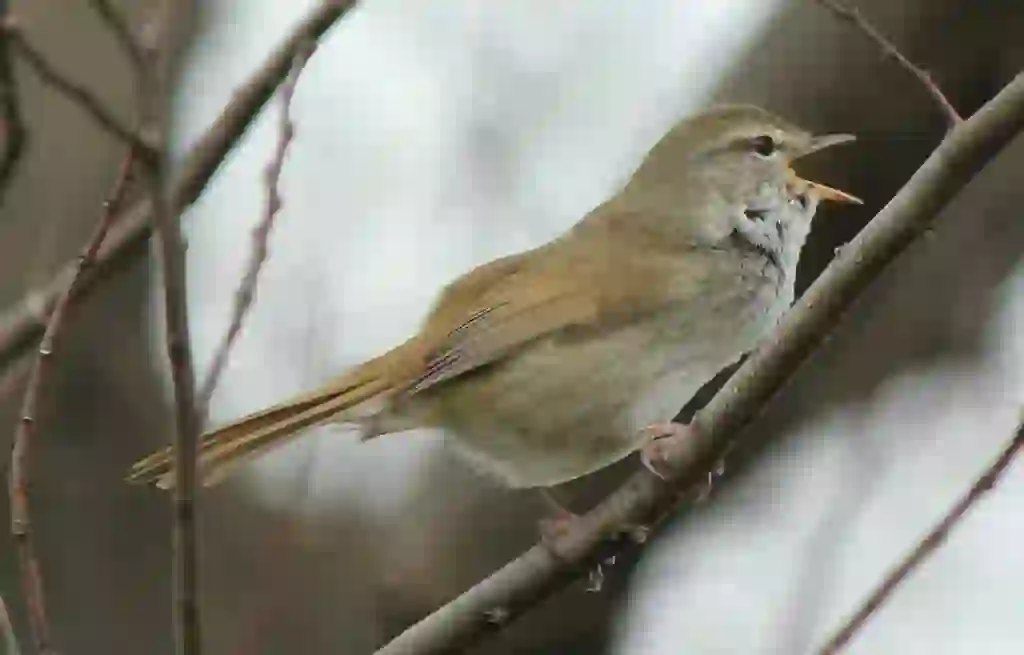
Are Japanese Bush Warblers and White-eyes related?
Japanese bush warblers and white-eyes are often confused, but they belong to different families; the Japanese bush warbler belongs to the Cettiidae family, and the white-eye to the Zosteropidae family.
This confusion likely stems from their similar habitat patterns and the overlap in their depiction with flowers like plums, which are culturally significant but biologically unrelated.
Interestingly, while the uguisu is depicted with plum blossoms in art, it has no real association with plums, unlike the white-eye, which feeds on plum nectar.
Their physical coloration also adds to the confusion. The Japanese bush warbler is generally depicted as vibrant green in confections like 'uguisu mochi,' though its actual color is a duller brownish-green. The white-eye's bright green plumage more closely matches the mochi's color.
Both birds are also visible in spring, furthering the mix-up. Though their calls are quite distinct, visually they can be difficult to distinguish, making it better to identify them by sound rather than appearance.
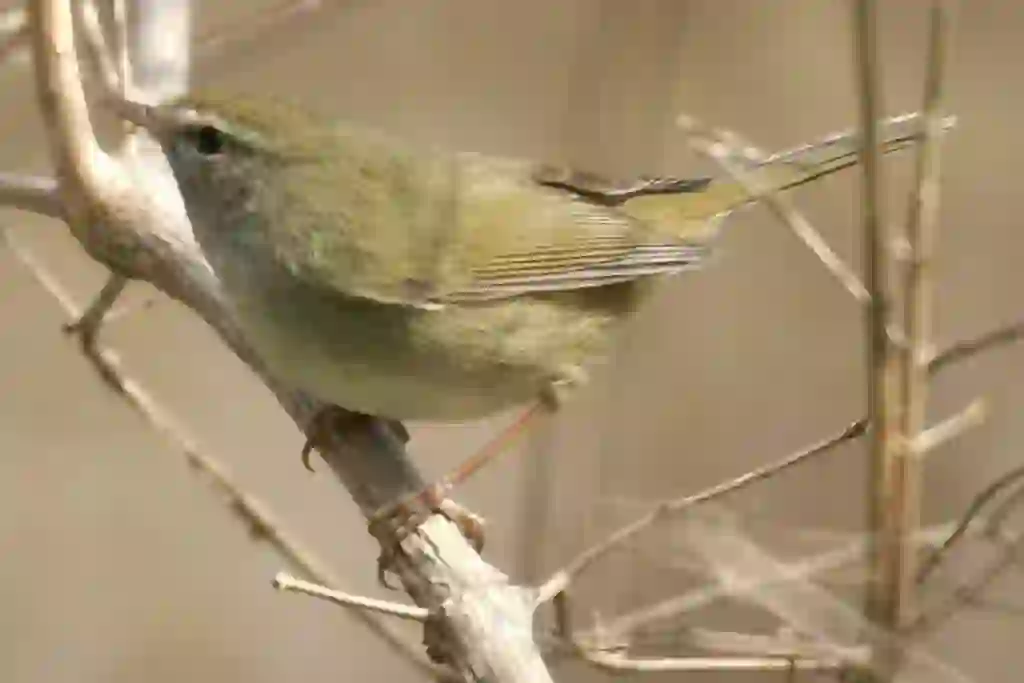
Who are the predators of the Japanese Bush Warbler?
Predators of the Japanese bush warbler include small birds of prey and snakes, which often prey on their eggs and chicks.
Another significant threat is the cuckoo, which practices brood parasitism by laying its eggs in the nests of bush warblers, often leading to the destruction of the warbler's own eggs and chicks.
However, recent studies have shown that Japanese bush warblers can sometimes detect and expel the intruding cuckoo eggs, although not all individuals possess this ability.

Would you like to become a part of the 'Animalbook.jp'?
Turn your knowledge into Q&A and share it with the world. ※Publication will be activated after purchase. Let's share information together!
Japanese Bush Warbler Type of List

- Philippine Bush Warbler
- Japanese Bush Warbler
- Korean Bush Warbler
- Southeast Asian Bush Warbler
- Tanimbar Bush Warbler
- San Cristobal Bush Warbler
- Fiji Thicketbird
- Taiwan Bush Warbler
- Mountain Bush Warbler
- Sunda Bush Warbler
- Yellow-bellied Bush Warbler
- Long-billed Bush Warbler
- Daito Bush Warbler
- Ryukyu Bush Warbler
- Sakhalin Bush Warbler
- Manchurian Bush Warbler
Information
Congratulations! You are the first commenter!

Create Your Favorite List!
Japanese Bush Warbler
Save the animals you love! Build your own list to quickly revisit your favorites later.

Would you like to leave a comment?
※Please note: This is for the purchase of rights to post comments within the article.
Find Your Favorites!
Our shop offers a unique and attractive selection of goods themed around various animals.
Japanese Bush Warbler References

- サントリーの愛鳥活動 https://www.suntory.co.jp/eco/birds/encyclopedia/detail/1384.html
- Wikipedia https://ja.wikipedia.org/wiki/ウグイス
- CANON BIRD BRANCH PROJECT https://global.canon/ja/environment/bird-branch/photo-gallery/uguisu/index.html
- BIRD FAN https://www.birdfan.net/pg/kind/ord17/fam1713/spe171301/
- 鳥ずかん https://www.kyoiku-shuppan.co.jp/docs/pages/rika/guide/bird/uguisu.html
- 国土交通省 中国地方整備局 太田川河川事務所(太田川生物誌) https://www.cgr.mlit.go.jp/ootagawa/Bio/birds/index392.htm
- JapanKnowledge https://japanknowledge.com/articles/kkotoba/21.html
- 目に見えるいきもの図鑑 https://orbis-pictus.jp/article/uguisu.php
- 国立科学博物館 私の研究-私の科学博物館の研究者紹介- 濱尾章二 https://www.kahaku.go.jp/research/researcher/my_research/zoology/hamao/index.html
- 語源由来辞典 https://gogen-yurai.jp/uguisu/
- ウグイスの知って楽しむ http://uguisu-bird.com/archives/275
Japanese Bush Warbler Introduction of media used
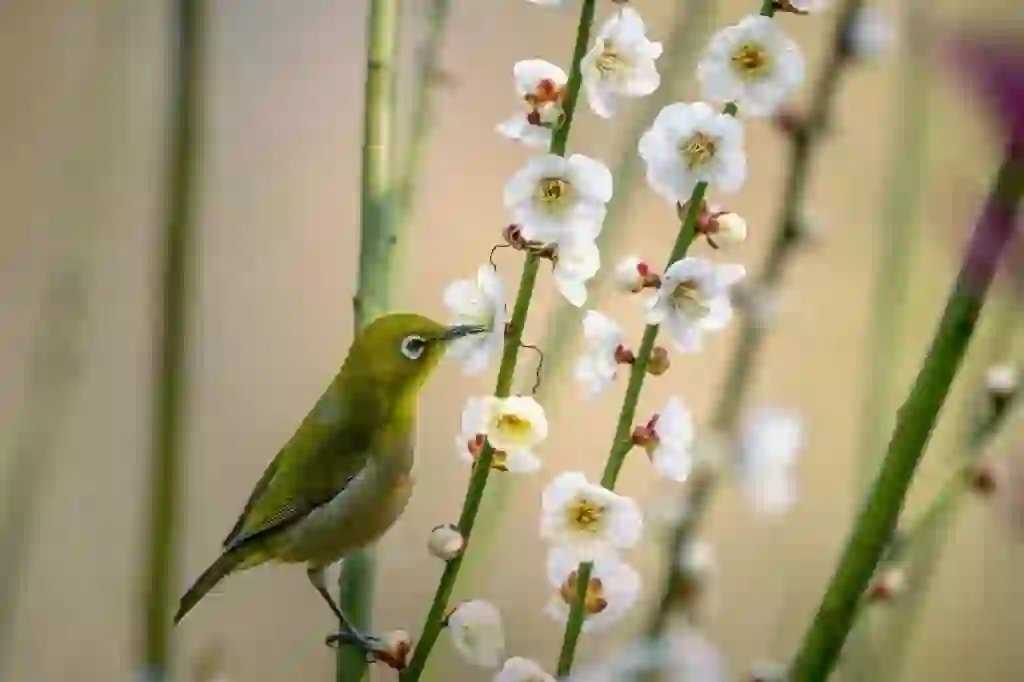
similar
出典:https://pixabay.com/images/id-6036530/

出典:https://commons.wikimedia.org/wiki/File:Cettia_diphone.jpg

enemy
出典:https://commons.wikimedia.org/wiki/File:Japanese_sparrowhawk_FemInTheNest02.jpg
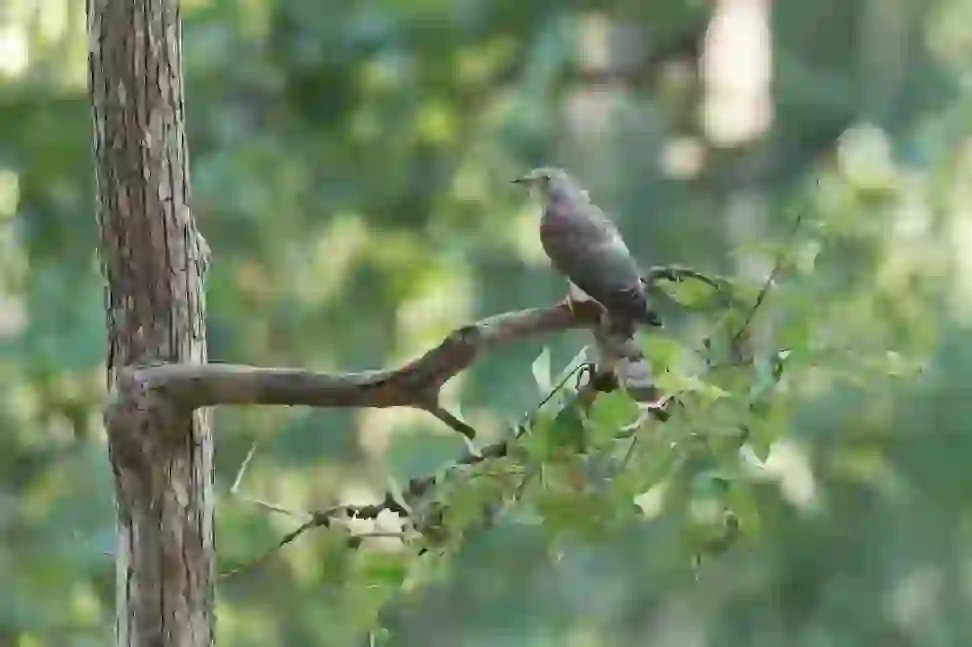
出典:https://unsplash.com/photos/ciTW28mpqtw

Help Enrich Our Animalbook.jp with Your Media!
We are constantly looking to expand and enrich our Animalbook.jp with amazing photos and videos of animals. If you have any media that you'd like to share, please contribute and help us showcase the beauty and diversity of the animal kingdom. Your submissions will be credited and featured in our encyclopedia, reaching a wide audience of animal lovers.


















